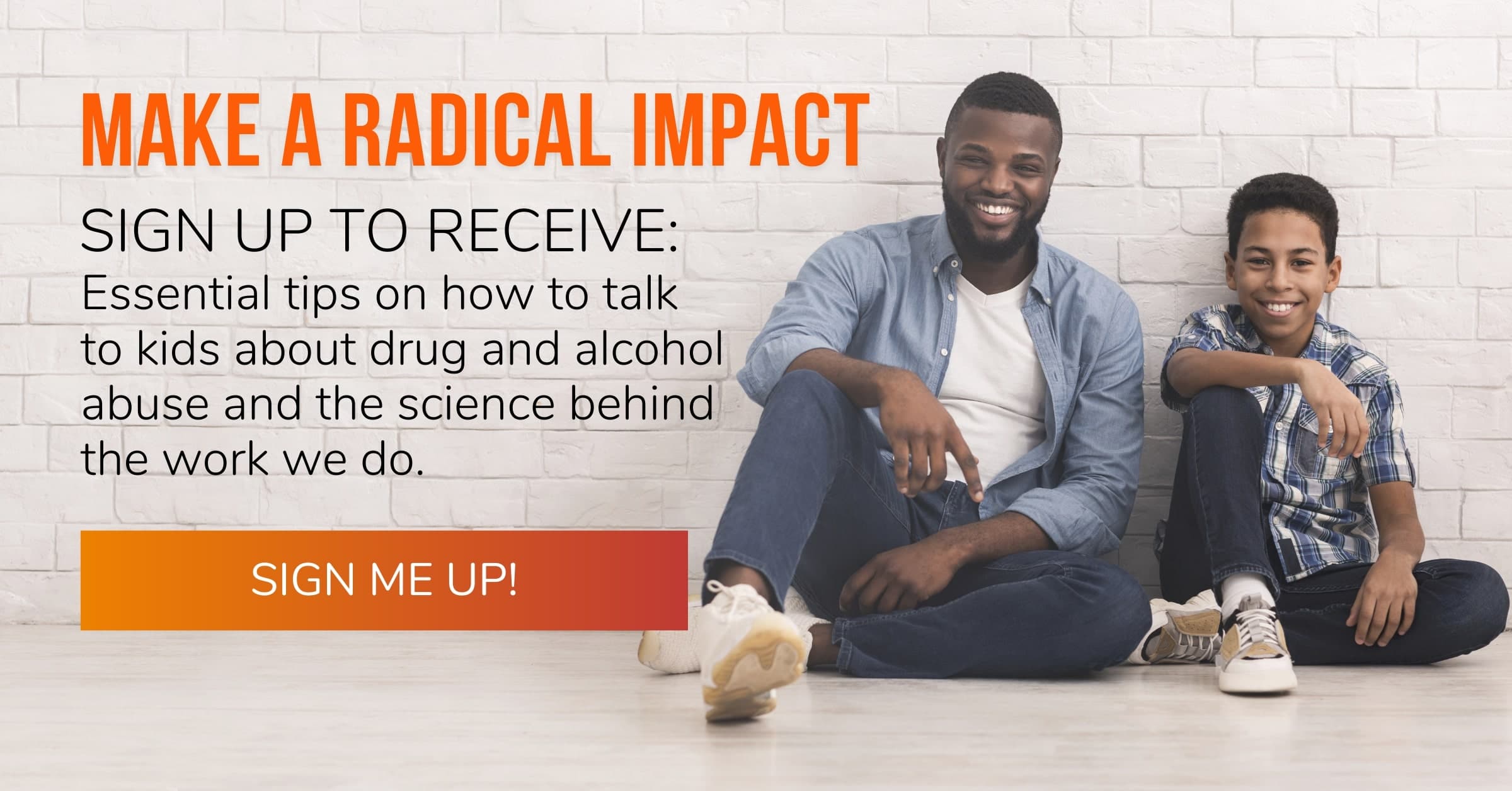School isn’t just where kids go to learn facts or finish homework. It’s where they spend most of their waking hours. It’s where they form friendships, figure out who they are, and build habits that shape their future.
And how they feel at school? That matters more than we realize.
If school feels safe and welcoming, kids are more likely to stay engaged, open up to adults, and steer clear of harmful choices. If it feels stressful or isolating, they might shut down or act out.
As educators and parents, we can shape a young person’s experience in powerful ways. Small daily interactions can create a sense of safety and belonging that lasts.
Here’s what we’ll cover — feel free to jump to what matters most to you:
- Why School Experience Matters
- What Parents Can Do To Support a Positive School Experience
- What Educators Can Do To Foster Safety, Connection, and Purpose
- 5 Realistic Ways Educators Can Involve Families
Why a Positive School Climate Protects Kids
Research shows that one of the strongest protective factors for young people is school connectedness. That means students feel like the people around them care and want them to succeed.
When students feel connected, they are:
- More likely to do well in school
- Less likely to feel depressed
- Less likely to use substances or get involved in violence
But connection doesn’t just appear out of nowhere. It’s built through everyday actions. A kind word. A check-in. A smile at the door.
How Parents Can Support a Positive School Experience from Home
Even if you’re not physically at school with your child, you have a big impact on how they feel about it. Kids who feel supported at home are more likely to feel confident walking through the school doors.
Here are five ways to support your child’s school experience:
1. Ask Better Questions
Most kids won’t say much if you ask, “How was school?” Instead, ask open-ended questions that spark curiosity, reflection, or even laughter.
Try this:
- “What was your favorite moment today?”
- “What’s something that surprised you?”
- “If your day was a movie, what would the title be?”
Scenario:
Skip the questions during the after-school shuffle. Try them over a snack or while driving. Kids tend to open up when they don’t feel put on the spot.
2. Praise the Effort, Not Just the Outcome
When the focus is only on grades or winning, kids can feel like they have to be perfect. Instead, celebrate hard work, persistence, and creativity. That helps build motivation and confidence.
Try this:
- “You really stuck with that assignment, even when it was tough.”
- “I noticed how much care you put into your project. That takes focus.”
- “You were so creative with your science model. I love how your brain works.”
Scenario:
If your child gets a disappointing grade, shift the conversation. Say, “I know you worked hard. Want to walk through what felt tricky?” This keeps the focus on learning, not perfection.
3. Encourage Hobbies and Activities
School doesn’t have to be the only place where your child shines. Interests outside the classroom can help kids build confidence and purpose.
Try this:
- “You’ve been sketching a lot lately. Want to check out an art class?”
- “You really light up when you talk about coding. Want to find a weekend workshop?”
- “Your playlist is so creative. Have you ever thought about making your own music?”
Scenario:
If your child struggles at school, boost what’s working. Whether it’s music, sports, building things, or baking, celebrate the things that make them come alive.
4. Stay Involved
You don’t have to attend every school event or volunteer every week. Small things count. Your child notices when you stay connected to their learning and well-being.
Try this:
- “I saw your teacher mentioned something cool in the class newsletter. Tell me about it.”
- “Do you want me to come watch the next game or showcase?”
- “I reached out to your teacher just to see how things are going. I want to support you however I can.”
Scenario:
Once a month, glance at the school website, newsletter, or online portal. Bring up one thing from what you see. Even if your kid brushes it off, it shows you’re paying attention.
5. Talk About Values and Choices
These conversations don’t need to be heavy or formal. In fact, they work better when they feel casual. And even if your child doesn’t say much, they’re still listening.
Try this:
- “Have you ever seen someone your age offered something risky at school?”
- “What would you do if a friend was getting pressured to try something dangerous?”
- “You’re going to face hard choices, and I trust you to think things through. I’ll always be here to talk.”
Scenario:
Watch a short Natural High video together and then ask, “What stuck with you?” or “Have you ever felt pressure like that?” A shared story can open the door.
If you’re not sure how to start a tricky conversation or want tips for helping your child feel heard, check out our guide to using motivational interviewing techniques with teens. Read here: How to Talk to Teens About Tough Topics
How Educators Can Foster Safety, Connection, and Purpose
Teachers and school staff are on the frontlines. You see students on their good days and their hard ones. You help them feel seen.
Here are five simple but powerful ways to help students feel like they matter:
1. Use Students’ Names Every Day
Greeting students by name builds trust. It tells them, “You belong here.”
2. Create Time for Students to Share
Try short daily check-ins. Ask questions like, “What’s something you’re looking forward to?” or “What’s a win from your week?” These moments help students feel valued.
3. Support Student Interests
Give students space to explore what excites them. Let them bring their passions into the classroom, whether that’s art, animals, or engineering. Interests build purpose.
4. Teach Coping and Social Skills
Model how to handle tough emotions. Simple activities like journaling, breathing exercises, or partner discussions can build real-life skills.
5. Use Free Natural High Videos and Lessons
We offer short, engaging videos that feature real people sharing how they stay inspired and drug-free. Lessons are easy to use in advisory periods, health classes, or anytime you have a few extra minutes. All content aligns with Common Core and National Health Standards.
These strategies also support social and emotional learning. When students practice things like self-awareness, decision-making, and communication, they’re better prepared for life inside and outside of school.
Realistic Ways Educators Can Involve Families (Even with a Full Class Load)
Sometimes families want to be involved, but they’re not sure how. And sometimes, life gets busy, and school slips off the radar. That’s okay. As educators, we can take small steps to help families feel welcomed and included.
We know educators are already stretched thin. When you’re teaching dozens, or hundreds, of students, staying closely connected to every family just isn’t possible.
But there are still simple, low-pressure ways to keep families in the loop and help them feel included.
Here are five realistic ideas that can fit into most teaching routines:
1. Send One Conversation Starter a Month
Instead of weekly updates or newsletters, try sharing a single prompt families can use at home. It takes less than a minute to send and helps open the door to meaningful conversations.
Examples you can use:
- “What’s something you were proud of this week?”
- “Did you have an opportunity to help someone at school?”
- “If today had a theme song, what would it be?”
2. Add a Family Resource Link to Your Class Page
Create a spot where families can check in on their own time. You don’t need to constantly update it. You may decide to rotate a few simple resources when it works for you. If you’re on our weekly email list, The Natural High Essentials, we are constantly providing resources to share with parents.
Ideas to include:
- One Natural High video each month
- A tip sheet on school routines or homework support
- Highlights of a student project or classroom moment
Start with this: Natural High’s Free Video Library
3. Use Your LMS For Quick Wins
Apps like Remind or ClassTag make it easy to connect with all families at once with no extra meetings or phone calls required.
You might use it to:
- Celebrate a class win (“We finished our first novel!”)
- Remind families to check in with their student about something specific
- Share a short article or video related to a current topic
4. Invite Feedback If It Fits Your Flow
This one depends on your workflow, but it can be powerful if you have the bandwidth.
Try asking families early in the year:
- “What’s something you want me to know about your child?”
Later in the semester, a short check-in with two questions can keep the dialogue going:
- “How is your child feeling about school right now?”
- “What’s one way we can support them?”
You’re not promising a phone call to every parent. You’re just creating space for them to share.
5. Host One “Open Door” Moment Per Semester
Some educators find it helpful to offer one low-key opportunity for families to engage.
This could be:
- A short virtual Q&A session
- A classroom showcase or student-led tour
- A worksheet for families and students to reflect on goals together
These touch points can be an additional way to build connection, but they’re not essential. Do what feels right for you this year.
When We Work Together, Kids Thrive
When students feel supported at school and at home, they do better. They’re more focused. They’re more confident. And they’re less likely to make risky choices.
That’s not just a gut feeling. Research backs it up.
The CDC found that when schools build strong partnerships with families, students show up more, behave better, and perform better. They’re also less likely to get involved in things like drug use or violence.
CDC: Parent Engagement in Schools
CASEL has also found that when schools and families work together on social and emotional learning, kids don’t just grow emotionally. They build stronger relationships, get better grades, and enjoy school more.
CASEL: Family Engagement
None of us can do this alone. But we’re not meant to.
When educators and families team up, even in small ways, students notice. They feel seen. They feel safe. They know someone’s in their corner.
And that kind of support? It gives them the courage to stay on track and follow what inspires them.
Related article: Perceived Popularity & Substance Use
Looking for a Place to Start?
We’ve got free tools to help you right now. Explore videos, lessons, and conversation guides that make a difference in just a few minutes.


